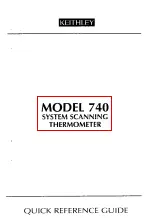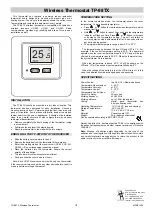7
1D) Special Considerations
A typical office installation may require that a single unit service areas being used for different applications.
These areas will commonly be a combination of external and internal zones.
It is always good to verify the intended use of all areas knowing their true peak loads before committing to
its final design and sizing.
It may be necessary to oversize or undersize the design to meet their daily demands. The following are
examples of when over sizing of a zone damper may be needed:
•
Areas with oversized windows that are exposed to the sun longer
•
Conference
rooms
•
Cafeterias
•
Areas with vending machines
•
Areas with extra lighting
•
Areas with computers, photocopier, etc…..
Areas such as computer rooms, kitchens and certain types of conference rooms may warrant a totally
separate system of their own and should not be part of the zones attached to an RTU. Certain critical areas
may call for cooling all year long and based on system settings could only guarantee occupant comfort a
portion of the year.
Knowing the critical areas of a building in advance and designing for them specifically will always result in a
more comfortable occupant. And it can be as simple as adding terminal reheat, radiant floor heating, a fan
powered VAV or even a separate small water source heat pump to critical area.
1E) By-Pass Damper Design Rules
A bypass damper is an airflow regulating device connected between the supply and return ducts. The
bypass damper will automatically open and bypass supply air normally delivered to the zone directly from
the supply to the return on a pressure rise when the VAV zone dampers are closing.
The by-pass damper should be sized to allow at least 70 to 80% of the nominal airflow of the RTU. A
simple way to determine if it is sized properly, assume all VAV zones are closed to their minimum position.
The by-pass should be large enough to re-circulate all the air from the RTU minus the amount set by the
minimum positions at the zones. A properly sized damper will result in an efficient and quiet operation.
2) Zone Thermostats VZ7200F5x00W Operation
The following information needs to be carefully read and properly understood if proper system
commissioning is to be achieved.
Contrary to low end commercial and residential zoning thermostats which use a two positions open-close
actuator, Viconics VZ7200F5x00X uses proportional analog 0 to 10 Vdc modulating damper actuator. This
enables performances and control sequences to be much closer to what is normally found in DDC
application specific control devices.
The operation of the zone thermostats is intrinsically linked with the operation of their RTU thermostat.
Although it will operate in a stand-alone mode if the communication network is down, normal operation of
the system as a whole requires that communication with the RTU thermostat is functional.
Data exchanged from the zone thermostats to the RTU thermostat:
•
Current PI heating demand ( output value is based on PI heating weight configuration )
•
Current PI cooling demand ( output value is based on PI cooling weight configuration )
Data exchanged from the RTU thermostat to the zone thermostats:
•
Current central system occupancy
•
Current system mode active ( hot air or cold air being delivered )
•
Outdoor air temperature


















